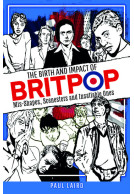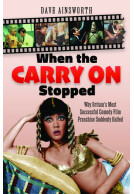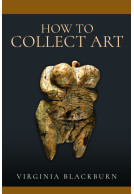The Secret Life of a Meadow (Hardback)
Imprint: White Owl
Pages: 176
ISBN: 9781399072540
Published: 2nd June 2023
(click here for international delivery rates)
Need a currency converter? Check XE.com for live rates
| Other formats available - Buy the Hardback and get the eBook for £1.99! | Price |
|---|---|
| The Secret Life of a Meadow eBook (60.8 MB) Add to Basket | £6.99 |
Glorious flower meadows were part of our life force for 2000 years or more before we swept them away last century on the altar of progress. Is there to be no more drinking from their font of well being? This book says not. Lavishly illustrated, it describes their history and, from the few remaining examples, it shows us how beautiful they are, how rich in plants and animals. It coaches us in their creation, even in small gardens, or their restoration in larger fields. It tells of the extraordinary lives of even the most ordinary denizens, little secrets that make the meadow's world go around and the convoluted links between the many plants and animals that keep everything in balance. Their stories are woven, season-by-season, into a year in the life of two meadows, a small, garden meadow and a larger old paddock. We hear of birds that plant trees, bacteria that become plant organelles, plants that drink from other plants, plants that fool or poison insects and insects that turn the tables, ants that foster butterflies, mice that navigate by compass, snails that house bees and how all of these connections, together with the flow of energy and nutrients, result in a healthy ecosystem. The book even suggests how adults and children alike can see these things for themselves. So, read this book and help your local green space to become a meadow and revel in it.
As featured in the article 'Flowering fields forever'.
Breathe magazine
Rating: 5 out of 5 stars
NetGalley, Mary Garbett
A really useful guide to growing your own meadow
If you’re thinking of creating a meadow this book is a really good place to start. It bridges the gap between understanding the biology of meadows and working out how to create one for yourself whether it’s a small patch in a garden, a whole field or more.
David takes us through the different types of meadow, their importance to farmers, how to create meadows from scratch, meadows through the seasons and the ecology of meadows. The book is structured so you can read it from cover to cover and/or dip into it as and when you need information.
The second part of the book is particularly useful to anyone wanting to create a meadow and gives options and ideas you can mix and match depending on the soil and space available. It provides useful resources to help work out what plants would thrive in your soil and suggests that making up our own mixes or growing suitable plants to drop in as plug plants can be the best way. To avoid new meadow growers thinking they’ve got something wrong David also spells out what to expect in the first year when plants and grasses can grow without restraint.
This is a really useful book for anyone interested in growing, or restoring, a meadow and I hope it will inspire many people to give it a try.
As featured in the article 'Meadows and insect conservation'.
Antenna magazine, members' journal of the Royal Entomological Society
Rating: 5 out of 5 stars
NetGalley, squee_me _
A very nicely done book on meadows as natural landscapes. Beautiful photography and great practical coverage of the topic, which is really the perfect combo for a gardening/landscaping resource.
Rating: 5 out of 5 stars
NetGalley, Anna Maria Giacomasso
I'm fascinated by books about nature and ecosystems. This is a good one, informative and entertaining. The gorgeous pictures are a bonus.
Highly recommended.
Rating: 5 out of 5 stars
NetGalley, Annie Buchanan
Since the second world war, 97% of the meadowland within the UK has disappeared, mostly in aid of expanded agricultural use. The authors write expressively and poignantly about the loss of habitat both in terms of biodiversity as well as cultural terms.
The book's logical layout allows the reader to retain information, concentrate on the gorgeous full colour photography, and ease finding information later. There are no chapter notes, but the authors/publisher have included a good cross-referenced index, and abbreviated resources and links lists for further reading.
Five stars. This would make an excellent choice for public library acquisition as well as for readers who enjoy natural history and nonfiction selections.
As featured in the article 'Wilding Cheshire Gardens'.
Cheshire Life, July 2023
Having lived in the country some of my life, I can appreciate how important it is, to have areas separate for every type of creature, to live in the wild, in the natural world.
NetGalley, Dee Williams
This beautifully written book about English meadows, complete with gorgeous photographs, truly brings these into the spotlight, and continually stresses the importance of these separate nature havens.
I enjoyed learning about the different varieties of plants, animals, insects, and other creatures, and how they survive each day, despite the ever presence pressure, of human progression.
The photos too, gave the information presented, such an interesting feel, and I loved examining each one. I think the author did such a fantastic job.
I would definitely love to read more from David Morgan.
Rating: 5 out of 5 stars
NetGalley, Brenda Carleton
Meadows are vitally important and we have much to learn about their characteristics, importance and benefits. The Secret Life of A Meadow is timely, informative and practical and contains beautiful photographs.
The authors describe the difference between meadows and pasture and the distinction is important. Though the focus is on England (the most meadow-rich county is Worcestershire), the principles are the same everywhere. One of the most thought-provoking details that hit me like a brick is that turning arable land back to its past meadow state is extremely challenging and more than just scattering a few seeds. We must mindfully and patiently introduce plants and seeds which will in turn invite different animal species.
In this book two meadow experiments are discussed, a small garden meadow (which we can build) and a larger older established one. Part One describes meadows, soils and climate. Part Two is a practical section on creating a meadow. Part Three describes seasonal expectations and Part Four is about preserving and conserving. I like that species which thrive in meadows (such as grasses, orchids, buttercups, snake's fritillary) are detaiiled, what they add to the ecosystem and what their presence signifies. Fungi are also important.
My husband and I are extremely fortunate to live a few meters from several true meadows (unworked for over 100 years according to locals) which we wonder at and wander nearly every day. It's like an entirely different world! Now I know more of what's going on below and above the ground as life cycles continue and plant and animals go about their business.
Whether you wish to learn more about meadows or create one of your own, don't pass this up.
Rating: 5 out of 5 stars
NetGalley, Ren Hall
This was a wonderful look in to the world of meadows and the insects, birds and animals that make them their home. This book also included some absolutely stunning photography and illustrations.
About David Morgan
David grew up in the West Midlands at a time when there were still wild and messy pieces of countryside to explore. He has continued exploring nature for his whole life both professionally, as a research plant physiologist, and privately, as a keen botanist. He has grown a wildflower meadow in his garden for nearly 30 years and in retirement has taken up detailed investigation of this little piece of heaven. Instagram: @countrysketches
About Wilson Wall
A scientist by inclination and training, Wilson studied zoology and then genetics, an area in which he worked for many years. While being a professional laboratory scientist he continued his interest in the natural world, especially invertebrates. A perfunctory change of career now sees Wilson running Bewdley Orchids, a conservation company which grows British native orchids for repopulating meadows and orchards.















